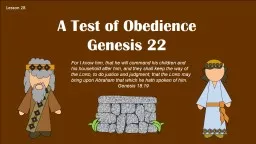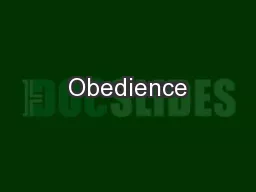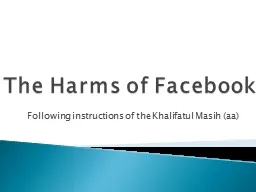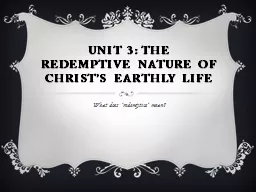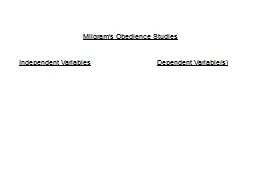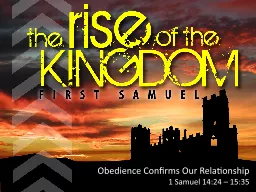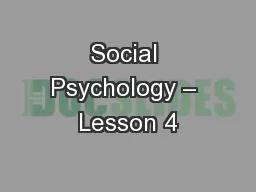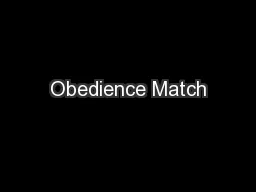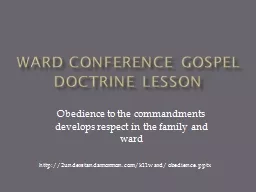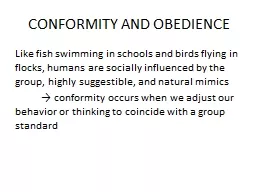PPT-Lesson 28 A Test of Obedience
Author : myesha-ticknor | Published Date : 2019-06-22
Genesis 22 For I know him that he will command his children and his household after him and they shall keep the way of the Lord to do justice and judgment
Presentation Embed Code
Download Presentation
Download Presentation The PPT/PDF document "Lesson 28 A Test of Obedience" is the property of its rightful owner. Permission is granted to download and print the materials on this website for personal, non-commercial use only, and to display it on your personal computer provided you do not modify the materials and that you retain all copyright notices contained in the materials. By downloading content from our website, you accept the terms of this agreement.
Lesson 28 A Test of Obedience: Transcript
Download Rules Of Document
"Lesson 28 A Test of Obedience"The content belongs to its owner. You may download and print it for personal use, without modification, and keep all copyright notices. By downloading, you agree to these terms.
Related Documents

